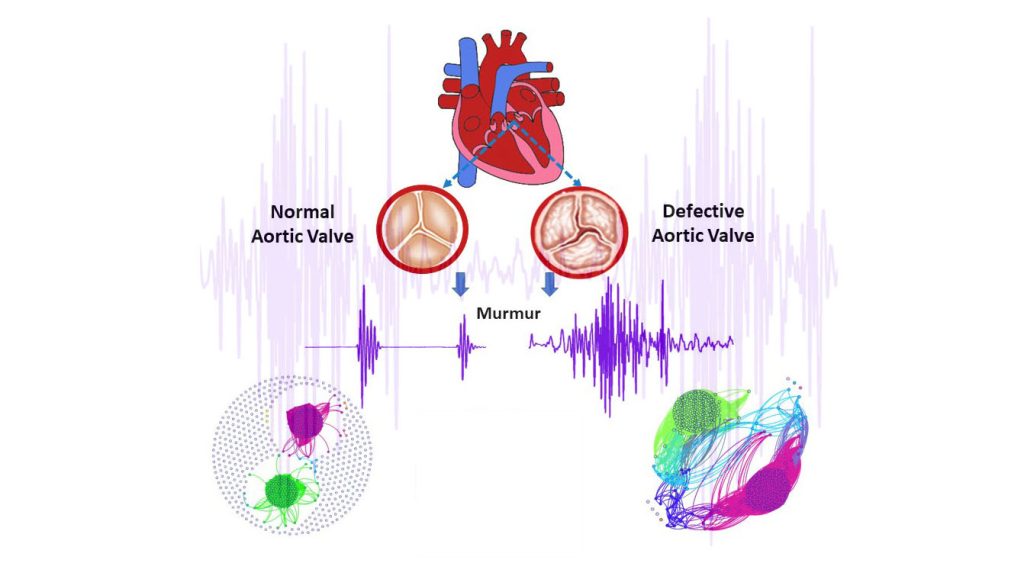Tracing the correlations between heart sounds allows graph theory to distinguish aortic valve dysfunction with minimal technology.
From the Journal: Journal of Applied Physics
WASHINGTON, August 30, 2022 – Aortic valve stenosis occurs when the aortic valve narrows, constricting blood flow from the heart through the artery and to the entire body. In severe cases, it can lead to heart failure. Identifying the condition can be difficult in remote areas because it requires sophisticated technology, and diagnoses at early stages are challenging to obtain.
In the Journal of Applied Physics, by AIP Publishing, researchers from the University of Kerala, India, and the University of Nova Gorica, Slovenia, developed a method to identify valve dysfunction using complex network analysis that is accurate, simple to use, and low-cost.

“Many rural health centers don’t have the necessary technology for analyzing diseases like this,” said author M.S. Swapna, of the University of Nova Gorica and the University of Kerala. “For our technique, we just need a stethoscope and a computer.”
The diagnostic tool works based on the sounds produced by the heart. The organ creates a “lub” noise as it closes the mitral and tricuspid valves, pauses as ventricular relaxation occurs and the blood fills in, then makes a second noise, “dub,” as the aortic and pulmonary valves close.
Swapna and her team used heart sound data, collected over 10 minutes, to create a graph, or a complex network of connected points. The data was split into sections, and each part was represented with a node, or single point on the graph. If the sound in that portion of the data was similar to another section, a line, or edge, was drawn between the two nodes.
In a healthy heart, the graph showed two distinct clusters of points, with many nodes unconnected. In contrast, a heart with aortic stenosis contained many more correlations and edges.
“In the case of aortic stenosis, there is no separation between the lub and dub sound signals,” said Swapna.
The researchers used machine learning to examine the graphs and identify those with and without disease, achieving a classification accuracy of 100%. Their method takes the correlation of each point under consideration, making it more accurate than others that only consider the strength of the signal, and it does so in less than 10 minutes. As such, it could be useful for early-stage diagnoses.
So far, the method has only been tested with data, not in a clinical setting. The authors are developing a mobile application that could be accessed worldwide. Their technique could also be used to diagnose other conditions.
“The proposed method can be extended to any type of heart sound signals, lung sound signals, or cough sound signals,” said Swapna.
###
For more information:
Wendy Beatty
media@aip.org
301-209-3090
Article Title
Unwrapping aortic valve dysfunction through complex network analysis: A biophysics approach
Authors
V. Vijesh, M.S. Swapna, K. Satheesh Kumar, and S. Sankararaman
Author Affiliations
University of Kerala, University of Nova Gorica
